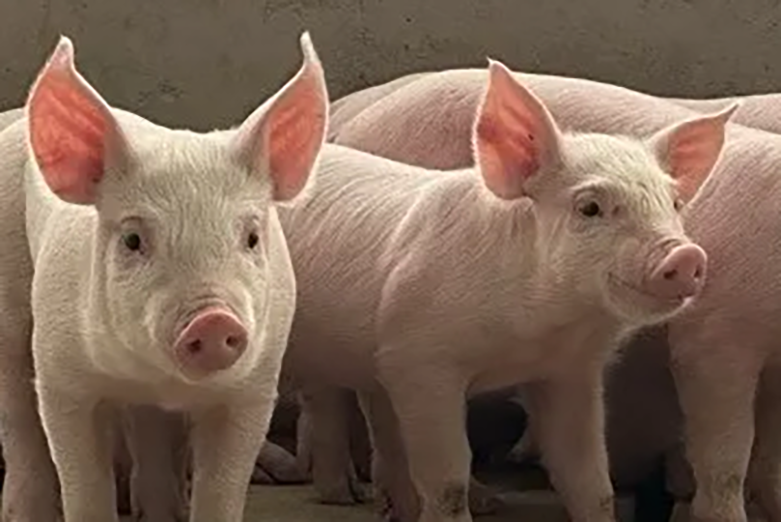Animal welfare has become a fundamental pillar of modern pig production. More and more, producers recognise that ensuring optimal conditions for their animals is not only an ethical duty but also a key factor for production efficiency and profitability. In this article, industry experts Patricia Blanco and Juliana Ribas share their insights into the internal and external elements defining animal welfare, its impact on production, and how the industry is adapting to new market demands.
The Experts

Patricia Blanco is a veterinarian with a degree from the University of León and a master’s in swine health and production from the University of Lleida. With over 15 years of industry experience, she works as a reproduction technical service specialist for PIC in Southeastern Europe.

Juliana Ribas is also a veterinarian, with a master’s in animal production from the Federal University of Mato Grosso and a PhD in animal behaviour and welfare from Paulista University in Brazil. She currently manages animal welfare and best practices at Agroceres PIC.
What is animal welfare and why is it so important?
Animal welfare is defined as the absence of stressful situations for pigs. This directly affects the health of the animals and the profitability of the farm. Animals in stress-free environments perform better, leading to lower costs and improved health and productivity indicators.
Implementing infrastructure that respects animal welfare not only ensures compliance with European regulations but also optimises production. Key aspects include appropriate biosecurity, temperature control, and stocking density to create an optimal environment.
Internal and external aspects of animal welfare
Internal aspects include health status, comfort, nutrition, and natural behaviour. However, Juliana Ribas highlights that external factors, such as consumer perception and social pressure for more sustainable practices, are gaining importance.
The disconnect between consumers and animal production raises concerns about pig treatment, prompting legislative changes in countries like Spain, Canada, and Brazil. Ensuring welfare not only improves product perception but also contributes to sustainability by reducing resource use such as feed and enhancing efficiency.

Challenges in managing animal welfare
A major challenge is staff training. The lack of daily inspections and failure to identify early signs of disease or stress compromise animal welfare.
Proper training in recognising signs of discomfort—such as behavioural changes, lameness or poor body condition—is essential. A well-trained team is the foundation of any effective animal welfare programme.
Euthanasia and handling of sick animals
Humane euthanasia is another critical aspect. Clear protocols and methods that minimise suffering—such as proper use of CO₂ or inert gases—are essential to ensure respect for the animal.
In Europe, new alternatives are currently being evaluated to improve these procedures, aiming to meet stricter welfare standards and societal expectations.
Group housing: a paradigm shift
The introduction of group gestation systems has brought significant changes to the European swine industry. Since Royal Decree 1135/2002 came into force in Spain, most farms have adapted facilities to allow sows greater mobility during gestation.
While the “mini-box” system used in some South American countries facilitates individual handling, it also presents challenges such as increased aggression among animals. The key lies in balancing movement freedom with a socially stable environment through appropriate management strategies.
Farm staff challenges
Lack of qualified personnel: A key issue in the pig industry is the shortage of trained staff. Many farms lack sufficient training, directly affecting animal handling quality. Effective animal welfare requires staff trained in handling, health control, treatment administration, and daily inspections.
Ongoing training: Both Patricia and Juliana stress the need for continuous training. Many farm workers lack the knowledge to handle complex welfare situations, which can result in mistakes impacting animal health and farm productivity. Investing in training not only improves pig welfare but also the work environment, as staff feel more capable and valued.
Difficult working conditions: Farm staff also face physical and emotional burdens. Dealing with sick animals, performing euthanasia, and making tough health decisions can be emotionally draining. Juliana highlights the importance of emotional and technical support in these situations.
Productivity pressure: Farm staff often face productivity pressure, which may prioritise quantity over quality in animal care. Limited time and resources may prevent proper welfare practices. Clear protocols, adequate support, and incentive schemes are key to overcoming these challenges.
The future of animal welfare in the pig industry
Juliana and Patricia agree that animal welfare is no longer optional. Consumer pressure, especially from younger generations, is driving a shift towards more humane and sustainable practices. However, this shift depends not only on technology but on the people working on farms. Continuous staff training is crucial to effectively implement good practices.

Despite challenges such as lack of qualified staff and the costs of complying with new regulations, success lies in a combination of training and adaptation to new market demands.
Conclusion
Animal welfare is not just a trend but a necessity to ensure the swine industry’s sustainability and profitability. From facility management and health protocols to staff training, many factors influence pig welfare. Legislative changes and rising consumer demand for ethical, responsible products clearly signal that the industry must adapt to remain competitive in an increasingly demanding global market.




